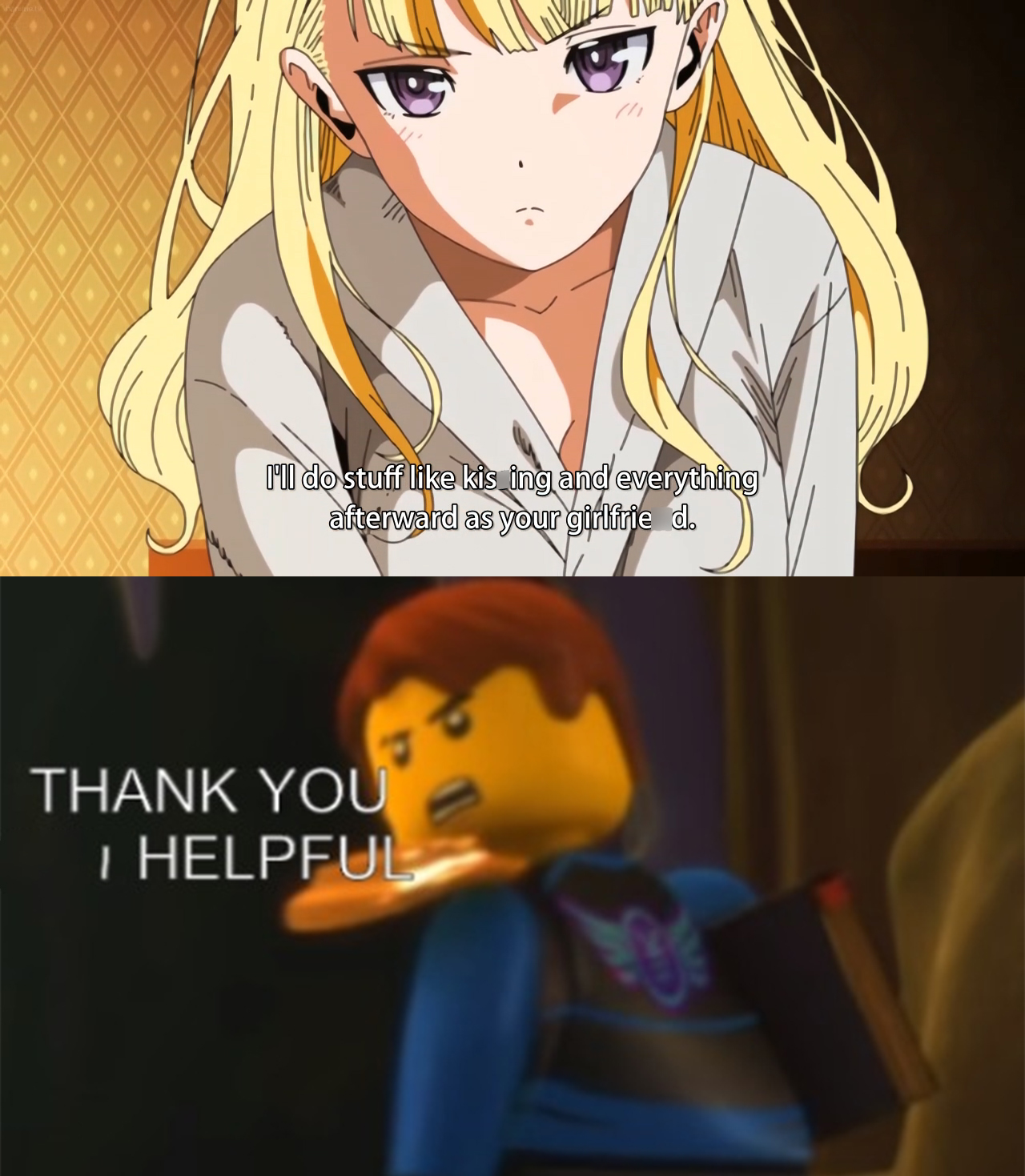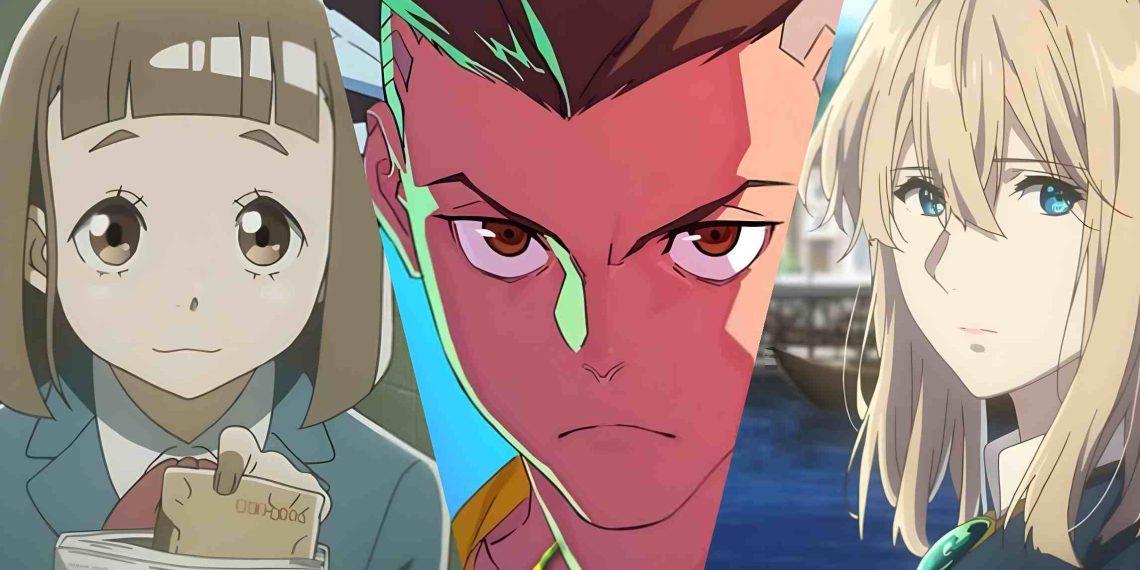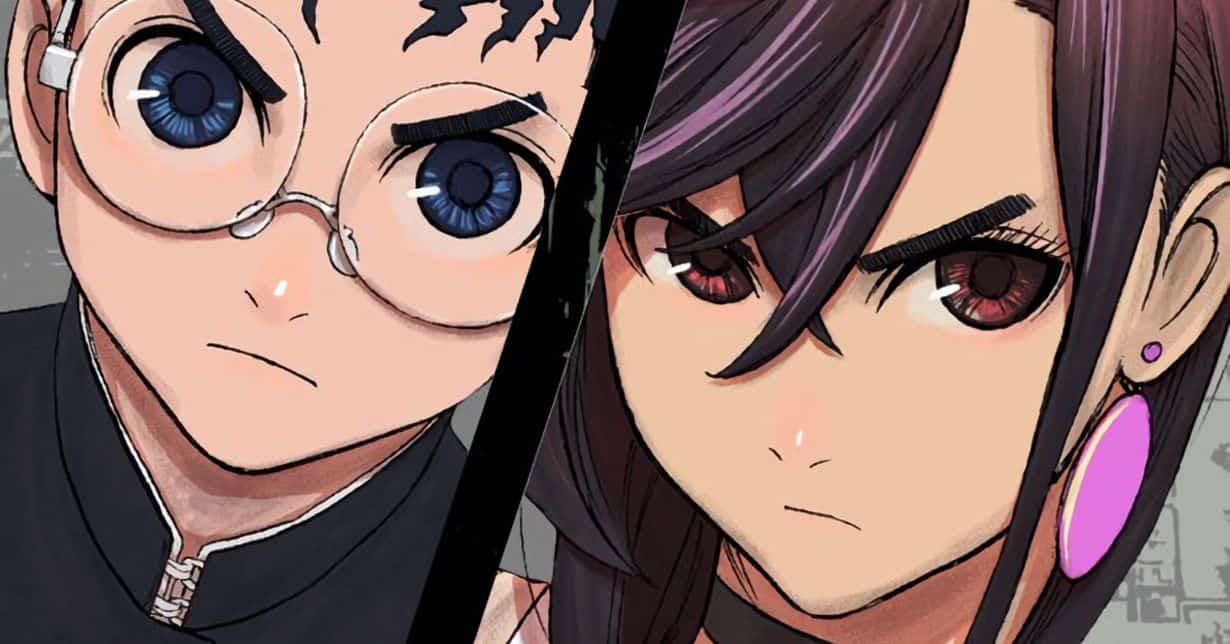Sometimes, the urge to watch an entire anime series in one go is irresistible. Whether it’s because you love the thrill of binge-watching or you need a shorter series to break up a longer one you’re currently viewing, these recommendations are perfect. Each series listed here is 13 episodes or less and has been ranked by over 3,000 anime fans.
Have you ever seen “Terror in Resonance”? This psychological thriller tells the story of two boys, Nine and Twelve, who aim to “wake up the world” through acts of destruction. If a short horror anime is what you’re after, “Paranoia Agent” is an excellent choice.

Directed by Satoshi Kon, this psychological thriller spans just 13 episodes but offers enough mind-bending content to leave you questioning your sanity for days. Other fantastic anime that you can finish in a single sitting include “Erased,” “No Game No Life,” and “Violet Evergarden.”
Just like the other anime fans who have contributed to this recommendation guide, you can vote for your favorite series to help shape the list. If you have personal favorites that you love to binge-watch, vote them up so they can rise higher in the rankings. Your input as an anime fan is valuable.
Note: Animes are not shown based on ranking order.
10. The Grimm Variations
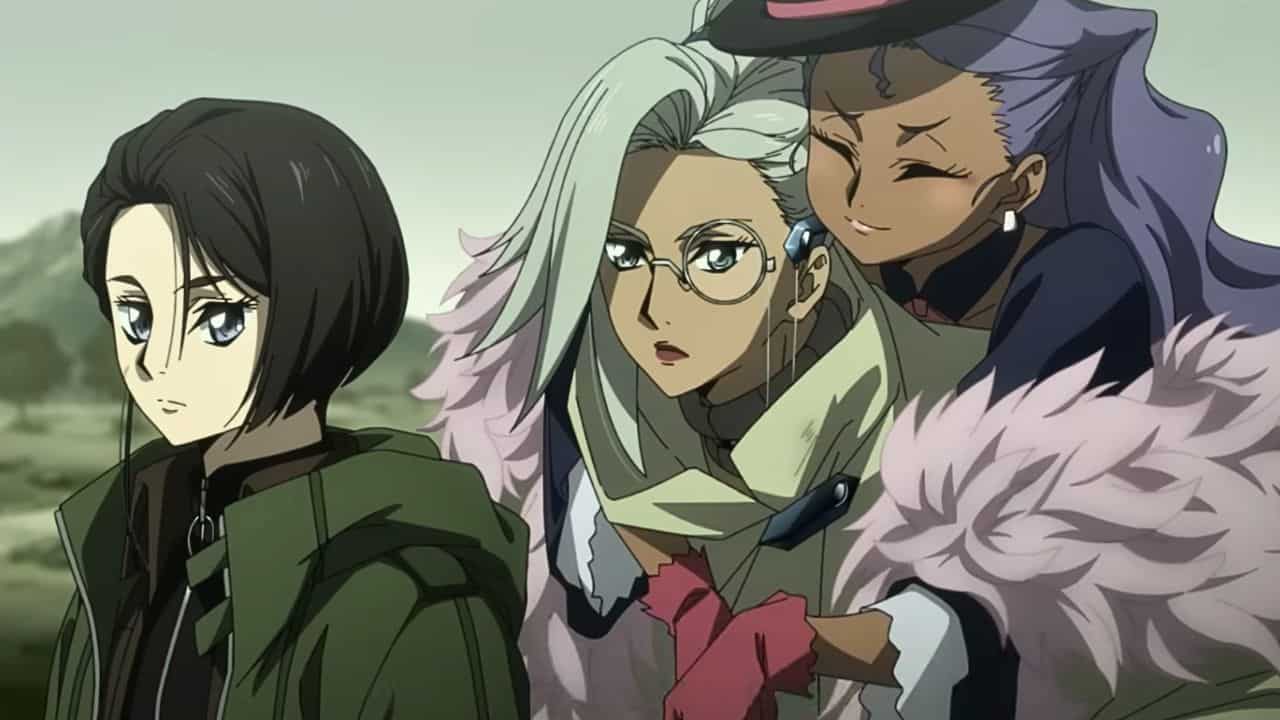
Netflix’s The Grimm Variation is a bit of a mixed bag. With only six episodes, each clocking in at around 40 minutes, it’s roughly equivalent to a standard course, making it just long enough to qualify as a binge-worthy anime.
Drawing inspiration from the fairy tales of the Brothers Grimm, this anthology series ventures into various tones, settings, presentations, and levels of quality. While most of the stories lean toward horror, they incorporate different subgenres and themes, resulting in a show that oscillates between brilliance and confusion, sometimes within the same episode.
Despite its flaws, The Grimm Variations never fails to hold your attention. Wit Studio eschewed tired retellings of classic tales, opting instead to give a modern, twisted spin to characters like Cinderella and Little Red Riding Hood.
The result is a collection of interpretations that are both fascinating and perplexing. While some episodes may drag on a bit too long, the anthology format ensures that the series remains fresh and unpredictable throughout.
“The Grimm Variations” is a nice and imaginative collection of stories inspired by the fairy tales of the Brothers Grimm. Written by P.R. Finch, this anthology weaves together elements of fantasy, folklore, and the supernatural to offer a fresh perspective on classic tales that have enchanted readers for generations.
Each story in “The Grimm Variations” offers a unique reinterpretation of a familiar Grimm fairy tale, injecting new life into timeless narratives with unexpected twists and inventive reimaginings. From “Cinderella” to “Little Red Riding Hood,” Finch explores the darker, more complex aspects of these stories while adding layers of depth and nuance to their characters and themes.
One of the standout features of “The Grimm Variations” is Finch’s masterful storytelling and richly descriptive prose. The author skillfully transports readers to enchanting and atmospheric settings, from misty forests to decrepit castles, evoking a sense of wonder and mystery that permeates each tale.
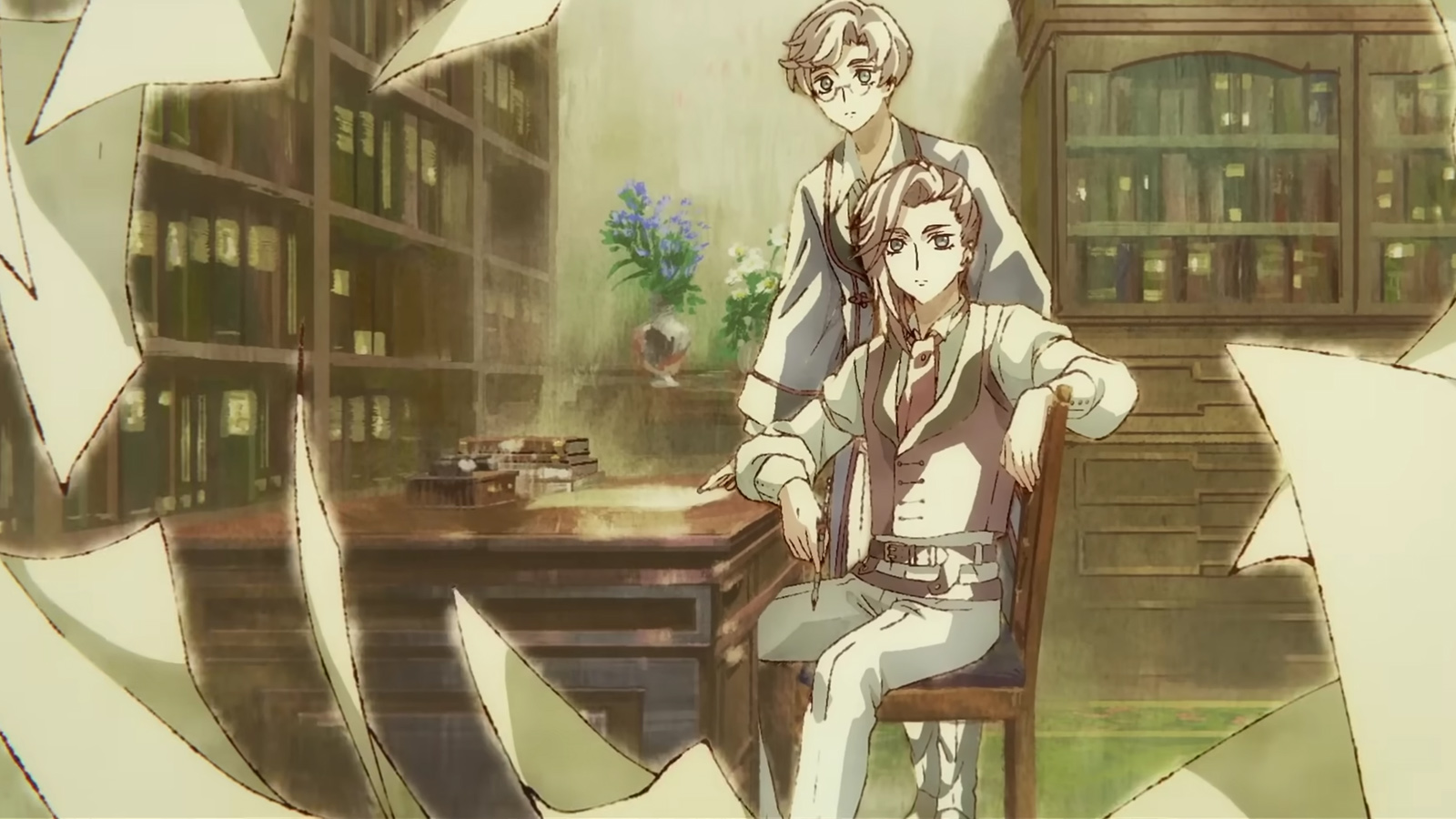
The vivid imagery and immersive world-building draw readers into the fantastical realms of the Grimms’ fairy tales, where magic and danger lurk around every corner.
Each story in the collection offers a fresh perspective on familiar characters, transforming them into fully realized individuals with their own desires, motivations, and struggles.
Whether it’s the cunning and resourceful Cinderella plotting her escape from her wicked stepmother or the brave and determined Little Red Riding Hood confronting the wolf in the dark woods, Finch breathes new life into these iconic figures, exploring their inner conflicts and personal journeys with empathy and insight.
“The Grimm Variations” also goes into the darker and more unsettling aspects of the original Grimm fairy tales, embracing the macabre and the supernatural with chilling intensity.
Finch deftly explores themes of loss, betrayal, and the consequences of unchecked ambition, adding layers of complexity and ambiguity to the familiar narratives. The result is a collection that is as thought-provoking as it is entertaining, challenging readers to reconsider their preconceptions of these beloved stories.
In addition to its compelling storytelling, “The Grimm Variations” is notable for its thematic depth and literary sophistication. Finch skillfully explores timeless themes such as the nature of good and evil, the power of love and redemption, and the importance of resilience in the face of adversity.
Each story offers its own philosophical insights and moral dilemmas, inviting readers to reflect on the complexities of the human condition and the enduring relevance of fairy tales in contemporary society.
The Grimm Variations is a spellbinding and thought-provoking collection that breathes new life into classic Grimm fairy tales. P.R. Finch’s imaginative storytelling, richly detailed world-building, and thematic depth make this anthology a must-read for fans of fantasy, folklore, and literary fiction alike.
Whether you’re drawn to tales of magic and adventure or craving a fresh perspective on familiar stories, “The Grimm Variations” offers a nice journey into the heart of the Grimms’ fairy tale universe.
9. Tonari no Seki-kun
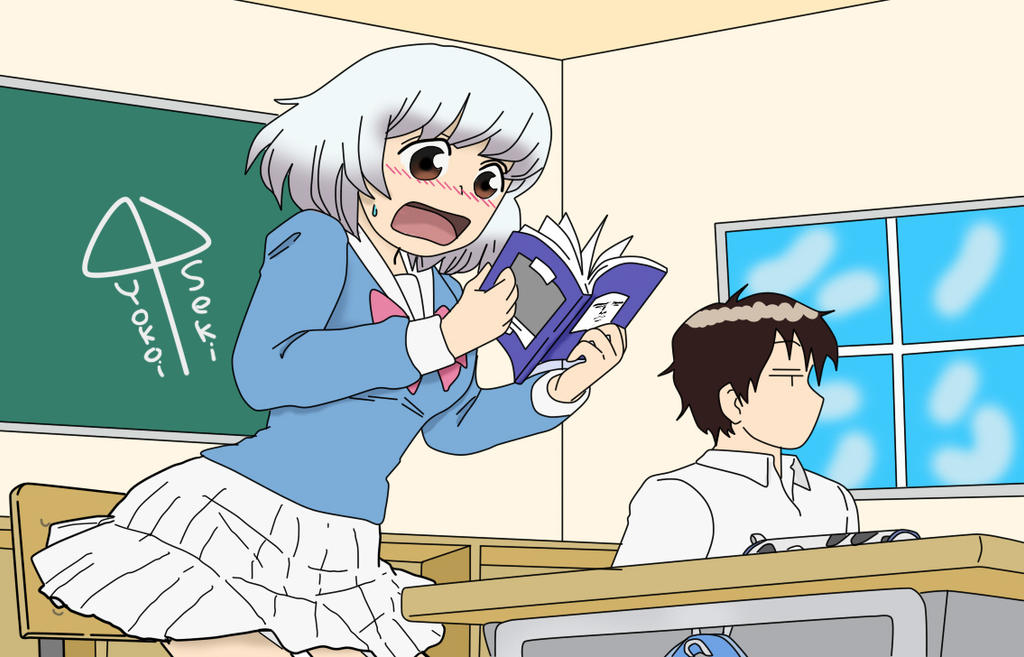
Tonari no Seki-kun boasts a refreshingly simple premise. Rumi Yokoi, a studious student, simply wants to focus in class. However, fate has her seated next to Toshinari Seki, a master of distraction who will stop at nothing to avoid paying attention. Thus begins an epic battle, with Seki ingeniously devising ways to waste time while Rumi struggles to resist the urge to get drawn into his antics.
With main episodes lasting a mere 7 minutes, the series breezes by in no time. While each skit revolves around the same core joke, the show’s short runtime and embrace of absurdity ensure that Tonari no Seki-kun feels consistently fresh and entertaining throughout its entire run.
“Tonari no Seki-kun” (translated as “My Neighbor Seki” or “Seki, The Master of Killing Time”) is a delightful manga series written and illustrated by Takuma Morishige. It follows the comedic exploits of a high school student named Rumi Yokoi who sits next to a boy named Toshinari Seki, a master of creative, albeit distracting, ways to pass the time during class.
Serialized since 2010 in Media Factory’s manga magazine “Comic Flapper,” “Tonari no Seki-kun” gained immense popularity for its simple yet ingenious premise and its ability to consistently deliver humor through Seki’s elaborate and often absurd antics. The series has also been adapted into a 21-episode anime series, which aired from January to May 2014.
What makes “Tonari no Seki-kun” truly stand out is its remarkable ability to take the mundane setting of a classroom and turn it into a playground for Seki’s imagination.
Each chapter (or episode) presents a new scenario in which Seki engages in some form of elaborate distraction, whether it’s building intricate domino structures, playing elaborate games with shogi pieces, or crafting miniature dramas with action figures. Meanwhile, Yokoi, who is initially portrayed as the straight-laced, studious type, finds herself drawn into Seki’s antics, often becoming more engrossed in them than her studies.
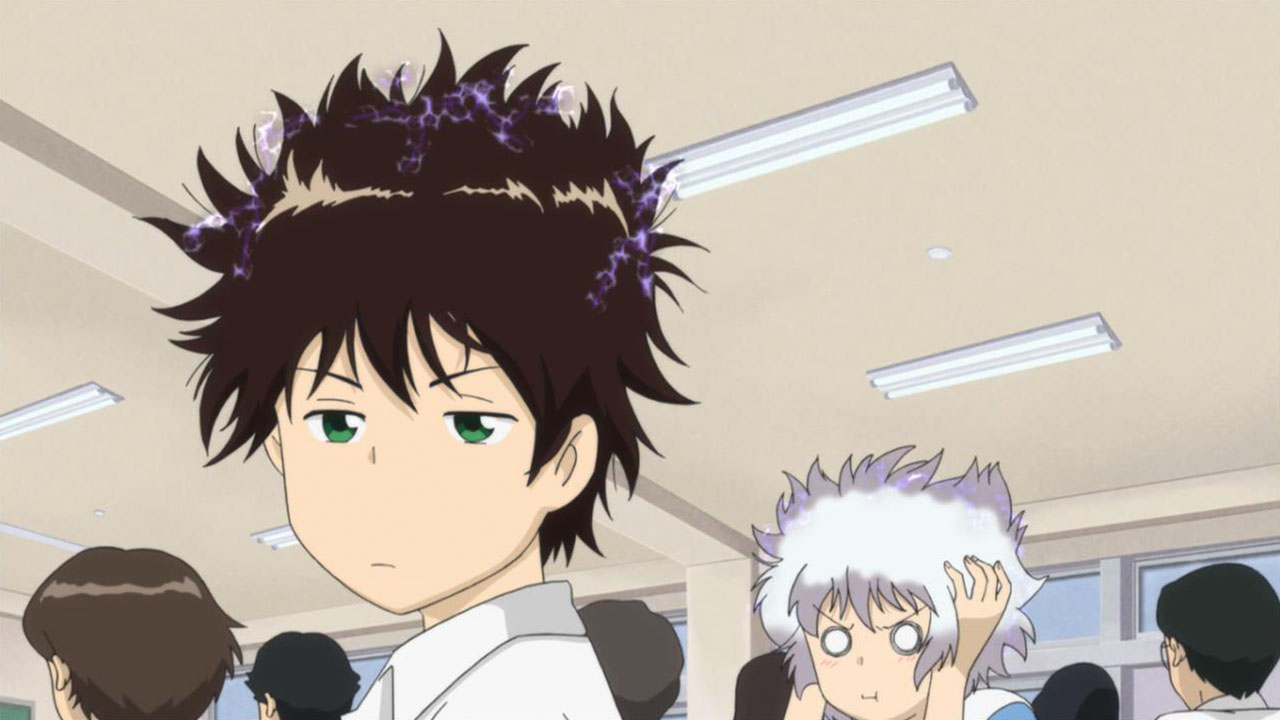
One of the series’ greatest strengths lies in its simplicity. The humor derives from the stark contrast between the mundane setting of the classroom and the absurdity of Seki’s activities. Morishige’s art style complements this simplicity perfectly, with clean lines and expressive character designs that enhance the comedic timing and delivery.
Moreover, “Tonari no Seki-kun” offers more than just comedy. Beneath the surface, it explores themes of creativity, boredom, and the desire for self-expression. Seki’s activities, while seemingly frivolous, serve as a form of escapism and self-expression for him, allowing him to break free from the monotony of school life.
Meanwhile, Yokoi’s fascination with Seki’s antics reflects a desire to break free from her own rigid mindset and embrace the joy of spontaneity.
Another aspect that adds depth to the series is the evolving dynamic between Seki and Yokoi. While Seki remains largely oblivious to Yokoi’s presence, Yokoi finds herself increasingly drawn into his world, often becoming an unwitting accomplice in his schemes.
Their interactions, while comedic, also reveal a subtle bond between them, as Yokoi finds herself both frustrated by Seki’s antics. Tonari no Seki-kun” is a charming and endlessly entertaining series that manages to find humor and creativity in the most unlikely of places.
With its clever premise, relatable characters, and imaginative storytelling, it’s no wonder that it has captured the hearts of readers and viewers alike. Whether you’re a fan of manga, anime, or simply in need of a good laugh, “Tonari no Seki-kun” is sure to delight and entertain.
In short, “Tonari no Seki-kun” is a delightful comedy anime that follows the antics of the mischievous Seki-kun and his long-suffering classmate, Rumi Yokoi. Each episode presents a new and creative way for Seki-kun to procrastinate during class, much to Yokoi’s amusement and frustration. With its charming characters and clever storytelling, “Tonari no Seki-kun” offers a lighthearted and entertaining viewing experience for all ages.
8. Gakuen Handsome
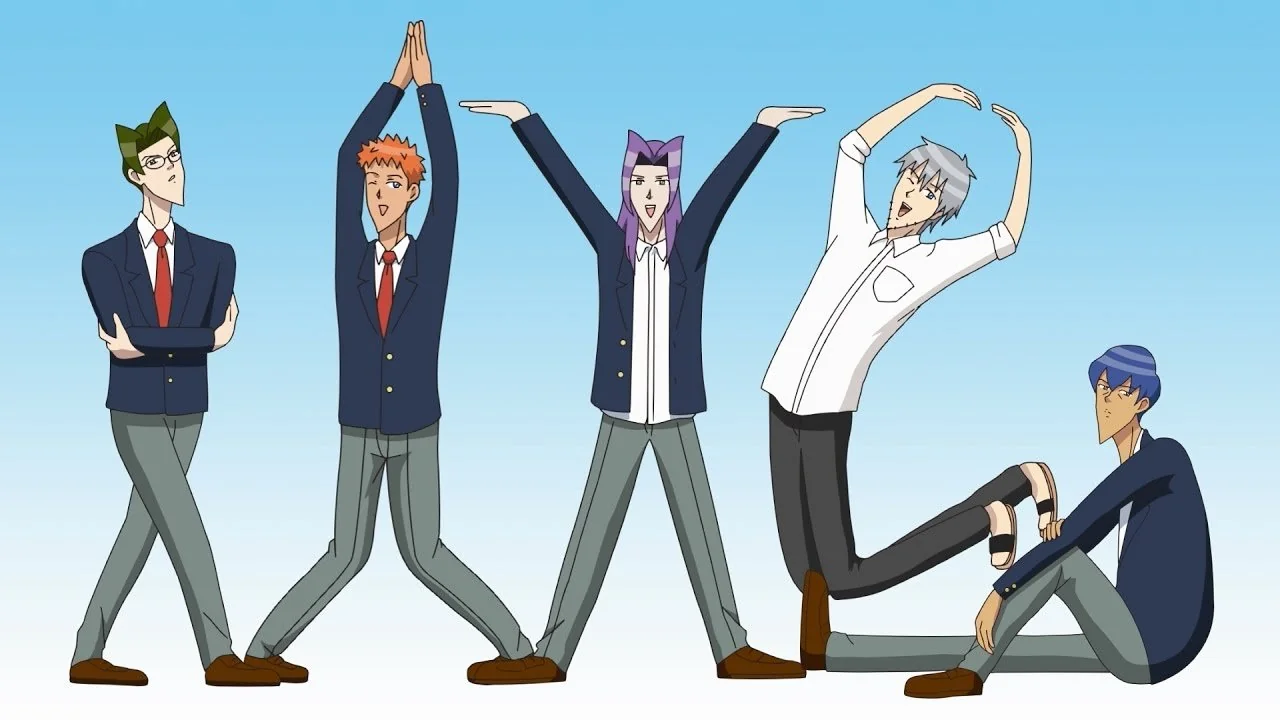
Gakuen Handsome is a unique case in the world of anime. Sporting subpar animation, unlikable characters, and a plethora of Yaoi harem tropes, it seems to revel in its own absurdity. However, what sets it apart is its self-awareness. The anime cleverly parodies a genre that has its fair share of divisive shows.
The story revolves around Yoshiki Maeda, a self-insert protagonist thrust into an all-boys high school where he becomes the center of attention for the school’s most sought-after bachelors, as well as a teacher. What follows are days filled with over-the-top declarations of love, extravagant romantic gestures, and characters sporting the sharpest chins in anime history.
Despite its shortcomings, Gakuen Handsome embraces its flaws with a knowing wink. It’s a satirical take on the boys’ love genre, offering a comedic spin on the complexities of romantic relationships between men. Whether you love it or hate it, there’s no denying that Gakuen Handsome is a bold and unabashed parody that leaves a lasting impression.
“Gakuen Handsome” is a visual novel game developed by Team YokkyuFuman and published by Dogenzaka Lab. Released in 2010, it has gained a cult following for its unique take on the parody genre, particularly within the realm of otome games and boys’ love (BL) media. This game stands out for its deliberately crude and exaggerated art style, absurd humor, and self-awareness of the tropes it lampoons.
The premise of “Gakuen Handsome” revolves around a protagonist who transfers to a new school called Baramon High School, where he encounters a variety of male characters who, despite their exaggerated and often grotesque appearances, fall into typical bishounen archetypes found in many otome games and BL media.
The protagonist, whose name can be customized by the player, navigates through various scenarios, interacting with these characters and potentially developing romantic relationships with them.
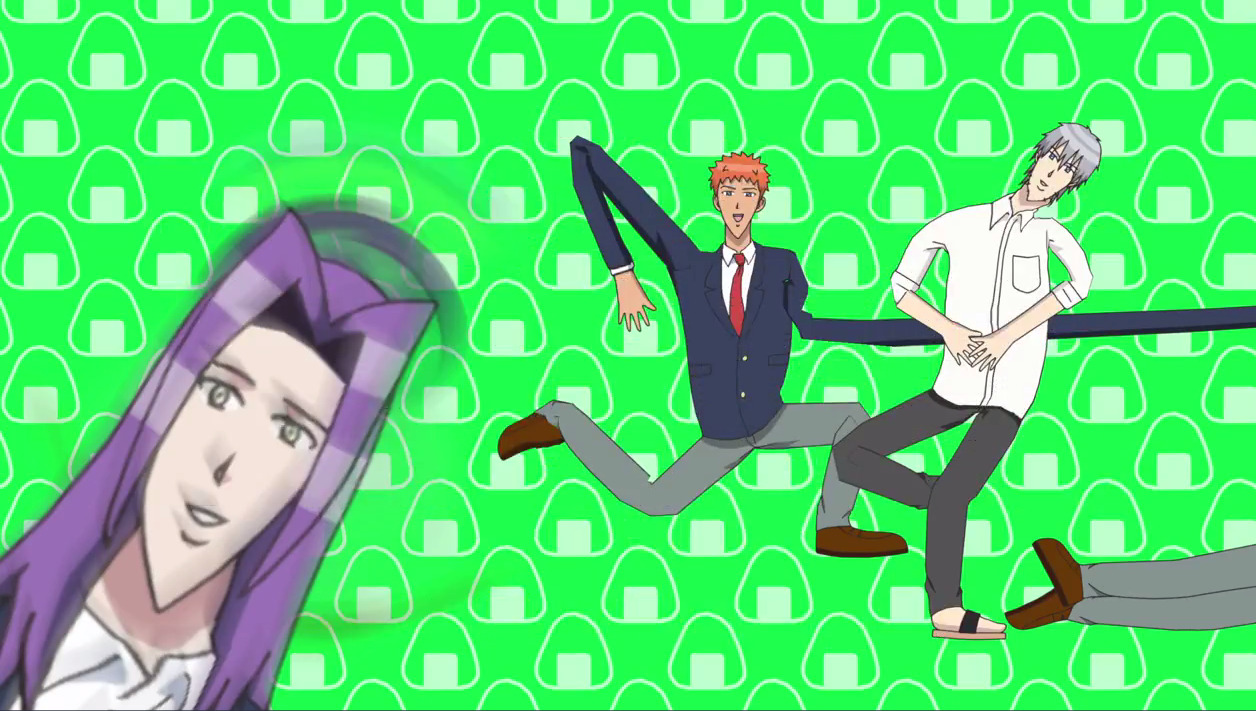
One of the most striking aspects of “Gakuen Handsome” is its intentionally unconventional art style. The characters are depicted with disproportionate features, often with bulging muscles, sharp chins, and comically exaggerated facial expressions.
This departure from traditional bishounen aesthetics serves as a deliberate parody of the genre, poking fun at the unrealistic beauty standards often portrayed in otome games and BL media. The art style, while undoubtedly crude and unconventional, adds to the game’s comedic value and reinforces its satirical nature.
In addition to its distinctive art style, “Gakuen Handsome” is renowned for its absurd and irreverent humor. The game features a plethora of nonsensical scenarios, bizarre dialogue, and over-the-top character interactions that frequently break the fourth wall.
From surreal dream sequences to ridiculous plot twists, “Gakuen Handsome” delights in subverting expectations and keeping players on their toes. The humor is often crass and unapologetically silly, catering to those with a taste for the absurd and absurdly hilarious.
Despite its humorous facade, “Gakuen Handsome” also offers a surprisingly engaging narrative experience. While the plot may seem nonsensical at first glance, it gradually reveals layers of depth and complexity beneath its absurd surface.
Themes of friendship, self-discovery, and acceptance are explored amidst the chaos, providing players with moments of genuine emotional resonance amidst the comedic mayhem. The game’s multiple endings and branching pathways also add replay value, encouraging players to explore different narrative paths and character interactions.
Another noteworthy aspect of “Gakuen Handsome” is its self-awareness of the tropes and conventions it parodies. The game frequently references and satirizes common clichés found in otome games and BL media, from love triangles to melodramatic confessions. By lampooning these tropes with a combination of wit and absurdity, “Gakuen Handsome” offers a refreshing take on a genre that is often criticized for its predictability and formulaic nature.
Gakuen Handsome is a delightfully absurd and self-aware parody of otome games and BL media. With its unconventional art style, irreverent humor, and self-referential wit, it offers a refreshing twist on familiar tropes while delivering an engaging narrative experience.
While its crude humor and unconventional aesthetics may not be to everyone’s taste, those who appreciate a good laugh and a healthy dose of satire will find much to enjoy in this offbeat gem of a game. Whether you’re a fan of the genre or simply looking for something different, “Gakuen Handsome” is a title that deserves a spot in your visual novel collection.
7. Time of Eve
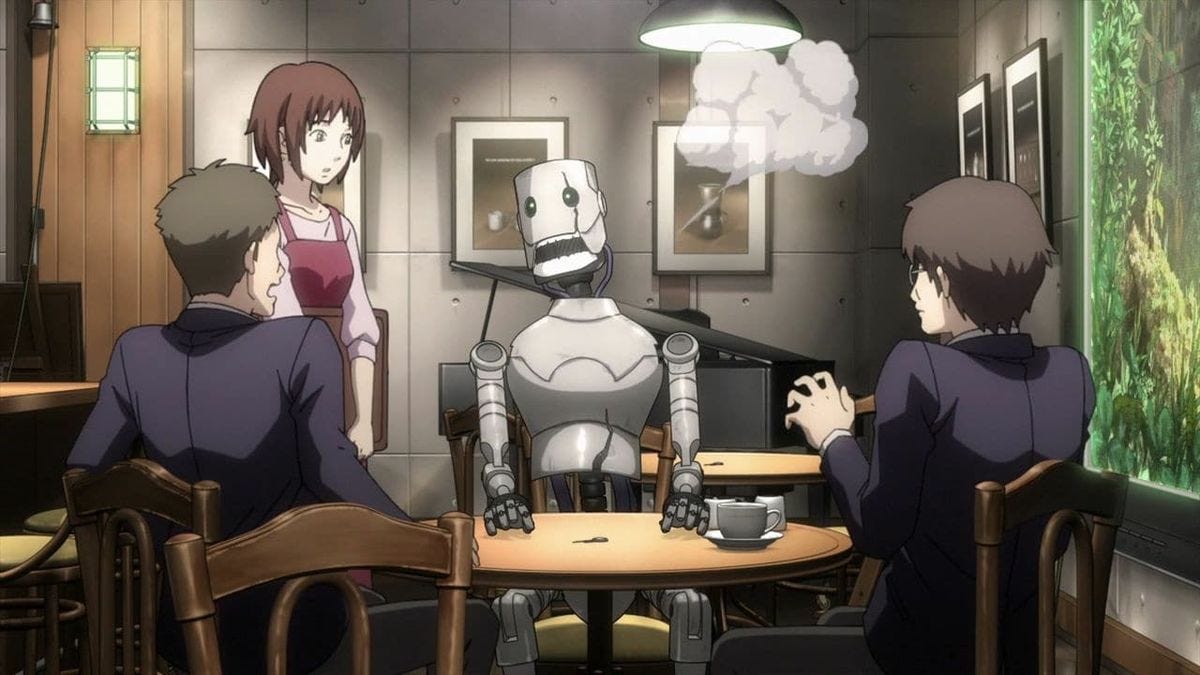
As the discussion unfolded, the 2010 movie adaptation nearly sidelined Time of Eve, but the 6-part ONA series stands strong on Crunchyroll, offering a unique narrative experience compared to its cinematic counterpart. For those seeking to look into this fascinating sci-fi tale, the original series proves to be the superior choice, boasting a narrative depth and accessibility absent in the film.
So, what exactly is Time of Eve about? At its core, the series looks into the intricate realm of artificial intelligence, traversing familiar terrain within the sci-fi genre. Set in an alternate reality where androids seamlessly integrate into everyday life, a stark division persists between humanity and its robotic creations.
These androids, often relegated to mere household appliances, face societal discrimination, encouraged by governing forces to dehumanize them as mere tools devoid of emotions or consciousness. However, a chance encounter alters the course for Rikuo, leading him to a cafeteria where norms are challenged, and perceptions shift.
In this innovative narrative place, the café emerges as a sanctuary, erasing the boundaries between humans and androids. Here, individuals are compelled to see beyond the surface, embracing equality and fostering genuine connections. While Time of Eve may tread familiar ground, its approach breathes fresh life into the exploration of AI and societal dynamics.
Rather than relying on a grand narrative arc, the series opts for intimate, character-driven vignettes, offering poignant glimpses into the microcosm of this society. Through personal stories and interactions, Time of Eve showcase the complexities of coexistence and the quest for understanding in a world shaped by prejudice and preconceptions.
In essence, Time of Eve presents a thought-provoking journey, inviting viewers to ponder the nature of humanity and the bonds that transcend artificial boundaries. It is a testament to the power of storytelling, weaving together themes of identity, empathy, and the quest for acceptance in a technologically advanced yet morally conflicted world.
“Time of Eve” is a thought-provoking and visually stunning anime that goes into themes of artificial intelligence, human interaction, and societal norms. Originally released as a six-episode ONA (Original Net Animation) series from 2008 to 2009, “Time of Eve” garnered critical acclaim for its engaging narrative, compelling characters, and beautifully crafted animation. Later, the series was compiled into a feature film, allowing for a broader audience to experience its profound storytelling.
Set in a futuristic world where robots, known as “androids,” coexist with humans, “Time of Eve” explores the blurred lines between man and machine. The story primarily revolves around a group of high school students who discover a mysterious café called “Time of Eve,” where humans and androids are indistinguishable from one another.
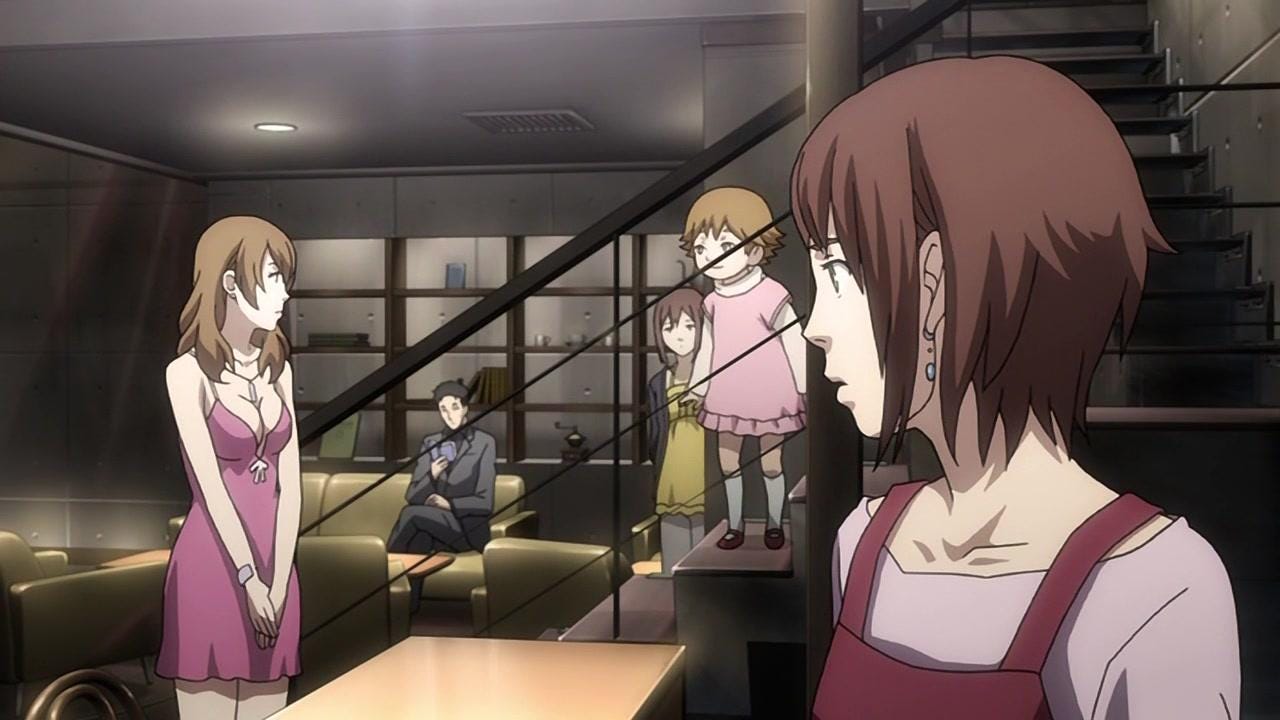
Here, the café’s rule is simple: patrons must treat each other as equals, regardless of their artificial or organic nature. This setting serves as the backdrop for philosophical discussions, ethical dilemmas, and personal revelations.
One of the most compelling aspects of “Time of Eve” is its exploration of the relationship between humans and artificial beings. Through intimate interactions between the characters and the androids, the series challenges preconceived notions of identity and consciousness.
As the protagonists spend time at the café, they begin to question the significance of distinguishing between human and machine, ultimately leading to a deeper understanding of empathy and compassion.
The animation in “Time of Eve” is nothing short of breathtaking. Each frame is meticulously crafted, with attention to detail evident in every scene.
From the bustling streets of the futuristic city to the serene ambiance of the café, the visuals draw viewers into a world filled with wonder and intrigue. The character designs are equally impressive, with each android possessing a unique appearance and personality that adds depth to the narrative.
Beyond its stunning visuals, “Time of Eve” also boasts a compelling soundtrack that complements the mood and atmosphere of the series. The music, composed by Tohru Okada, features a blend of electronic and orchestral elements that enhance the emotional impact of key moments.
Whether it’s the haunting melody of a poignant revelation or the upbeat rhythm of a lighthearted interaction, the score adds an additional layer of depth to the viewing experience.
At its core, “Time of Eve” is a story about acceptance and understanding. By challenging societal norms and exploring the complexities of human nature, the series encourages viewers to embrace diversity and celebrate the differences that make each individual unique.
Through its rich storytelling and thought-provoking themes, “Time of Eve” serves as a poignant reminder of the power of empathy and the importance of treating others with kindness and respect.
Time of Eve is a masterpiece of anime storytelling that grabs audiences with its engaging narrative, stunning animation, and profound themes. Whether you’re a fan of science fiction or simply appreciate a well-crafted story, this series is sure to leave a lasting impression. With its timeless message of acceptance and understanding, “Time of Eve” is a must-watch for anime enthusiasts and casual viewers alike.
6. Devilman Crybaby
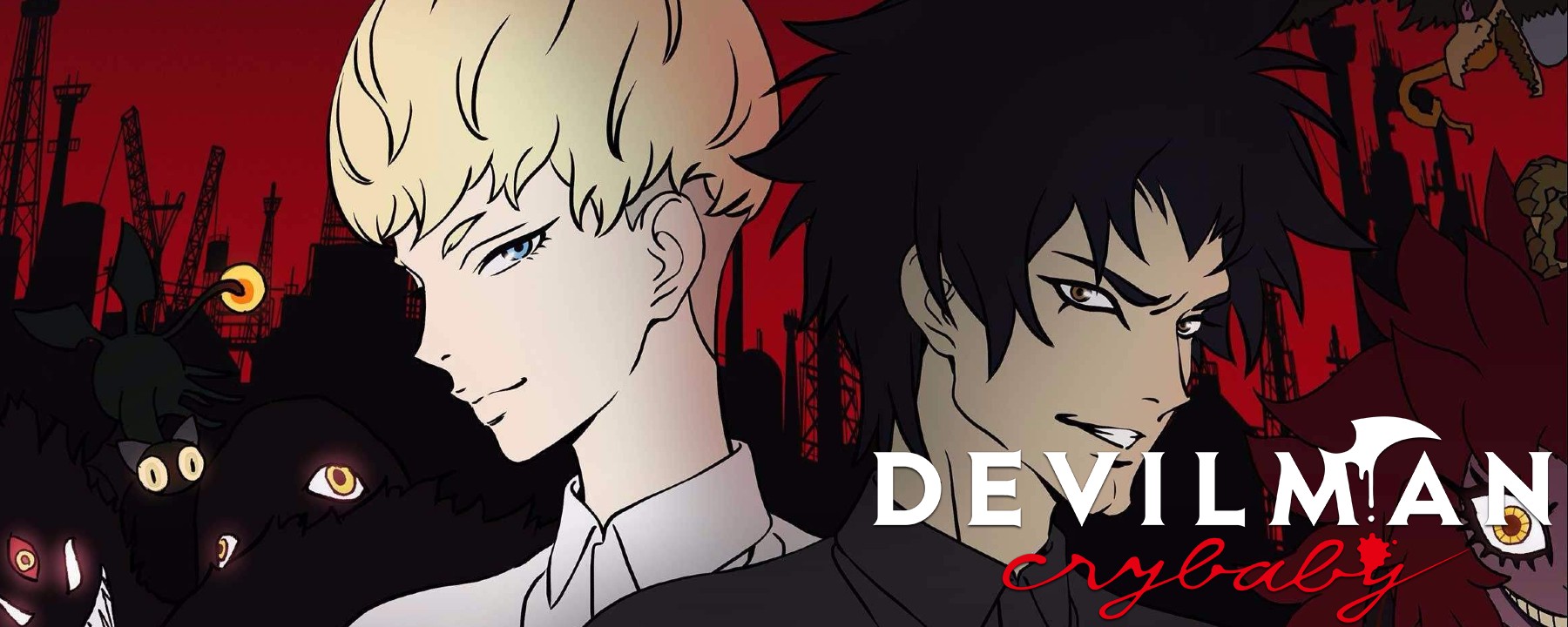
In a realm where many anime series embrace a lighthearted or comedic tone, Devilman Crybaby stands apart, looking deep into the abyss of nihilism as intended by its creator, Go Nagai. However, when Masaaki Yuasa was entrusted with crafting his spin on the Devilman narrative, the darkness escalated to unprecedented levels. What ensued is a psychological odyssey drenched in violence, gore, and mature themes, pushing the boundaries of storytelling in anime.
Unlike its counterparts, Devilman Crybaby refuses to shy away from its bleak essence. While interspersed with occasional moments of levity, the series remains steadfast in its nihilistic portrayal of the human condition. Yuasa’s vision transforms the narrative into a gripping exploration of the human psyche, challenging viewers to confront the darkest facets of existence.
Indeed, Devilman Crybaby ventures into territory that few anime dare to tread. Its unflinching portrayal of violence and gore serves as a stark reminder of the fragility of life and the depths of human depravity. Yet, amidst the darkness, there lies a testament to the artistry of the series.
From its distinctive style to its fascinating animation, Devilman Crybaby leaves an indelible mark on the viewer’s psyche. The incorporation of rap scenes, voice acting, and horror elements elevates the experience, immersing audiences in a world where chaos reigns supreme.
While some may argue that the series lacks the nuance of other psychological anime, its sheer craftsmanship cannot be denied. Devilman Crybaby stands as a testament to the notion that sadness and darkness do not equate to inferior quality. Instead, it serves as a bold experiment in storytelling, pushing the boundaries of what anime can achieve.
In essence, Devilman Crybaby is a mesmerizing journey into the depths of despair, challenging conventions and leaving an indelible impact on those who dare to look on its harrowing voyage.
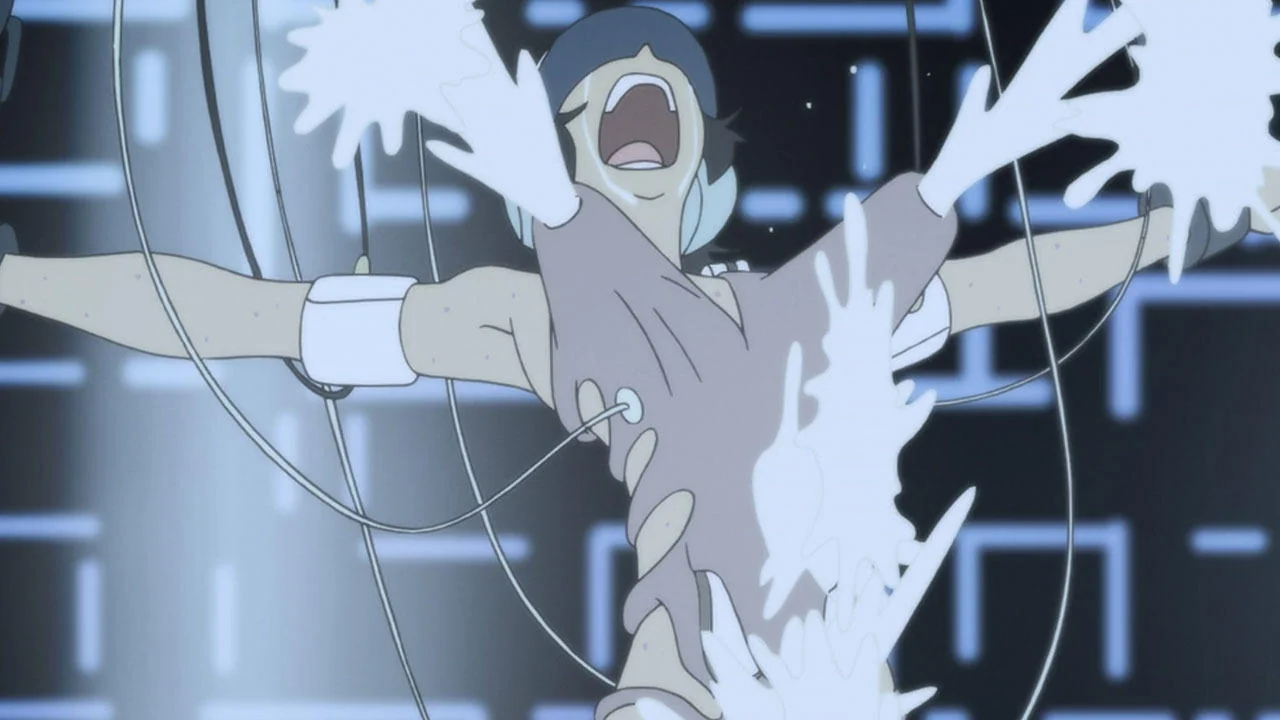
“Devilman Crybaby” is a groundbreaking anime series based on Go Nagai’s classic manga “Devilman.” Directed by Masaaki Yuasa and produced by Science Saru, “Devilman Crybaby” first premiered on Netflix in 2018, garnering widespread acclaim for its bold storytelling, stunning animation, and provocative themes.
“Devilman Crybaby” follows the story of Akira Fudo, a timid and compassionate high school student who becomes entangled in a brutal conflict between demons and humans. After reuniting with his childhood friend, Ryo Asuka, Akira discovers a dark secret: demons walk among humans, possessing their bodies and feeding on their desires.
When Akira merges with the demon Amon during a demonic attack, he gains incredible powers and becomes Devilman—a hybrid being with the strength of a demon and the heart of a human. With his newfound abilities, Akira vows to protect humanity from demonic threats and prevent a catastrophic war between the two species.
As Akira navigates the complexities of his dual identity, he confronts moral dilemmas, betrayal, and the dark underbelly of human society. Along the way, he forms bonds with allies and adversaries alike, blurring the lines between friend and foe in a world on the brink of destruction.
“Devilman Crybaby” explores profound themes such as identity, prejudice, and the nature of evil. The series goes into the duality of human nature, depicting both the inherent goodness and darkness within individuals. Through its graphic imagery and visceral storytelling, “Devilman Crybaby” challenges viewers to confront uncomfortable truths about society and the human condition.
The concept of empathy and understanding plays a central role in the narrative, as Akira’s compassion towards demons and humans alike serves as a driving force for his actions. Despite the chaos and violence surrounding him, Akira remains steadfast in his belief that love and connection can transcend even the most profound differences.
“Devilman Crybaby” is renowned for its distinctive art style and dynamic animation, courtesy of Masaaki Yuasa’s visionary direction. The series features fluid character movements, surreal imagery, and vibrant color palettes that immerse viewers in its dark and chaotic world. The animation seamlessly blends traditional hand-drawn techniques with modern digital effects, creating a visually stunning and emotionally resonant experience.
The soundtrack of “Devilman Crybaby,” composed by Kensuke Ushio, complements the series’ intense and atmospheric tone. The eclectic mix of electronic beats, rock anthems, and haunting melodies enhances key moments and heightens the emotional impact of the narrative. The opening theme, “MAN HUMAN” by DENKI GROOVE, sets the stage for the series with its pulsating rhythm and evocative lyrics.
“Devilman Crybaby” received universal acclaim from critics and audiences alike, earning praise for its bold storytelling, striking visuals, and thought-provoking themes. The series has left a lasting impact on the anime community and has sparked discussions about its allegorical nature and social commentary.
“Devilman Crybaby” is recommended for mature audiences seeking a thought-provoking and visually stunning anime experience. With its gripping narrative, complex characters, and provocative themes, “Devilman Crybaby” offers a visceral and unforgettable journey into the depths of human nature and the forces that shape our world.
Prepare to be mesmerized by its raw emotion, profound symbolism, and uncompromising vision—a true masterpiece that pushes the boundaries of storytelling in anime.
5. Golden Boy
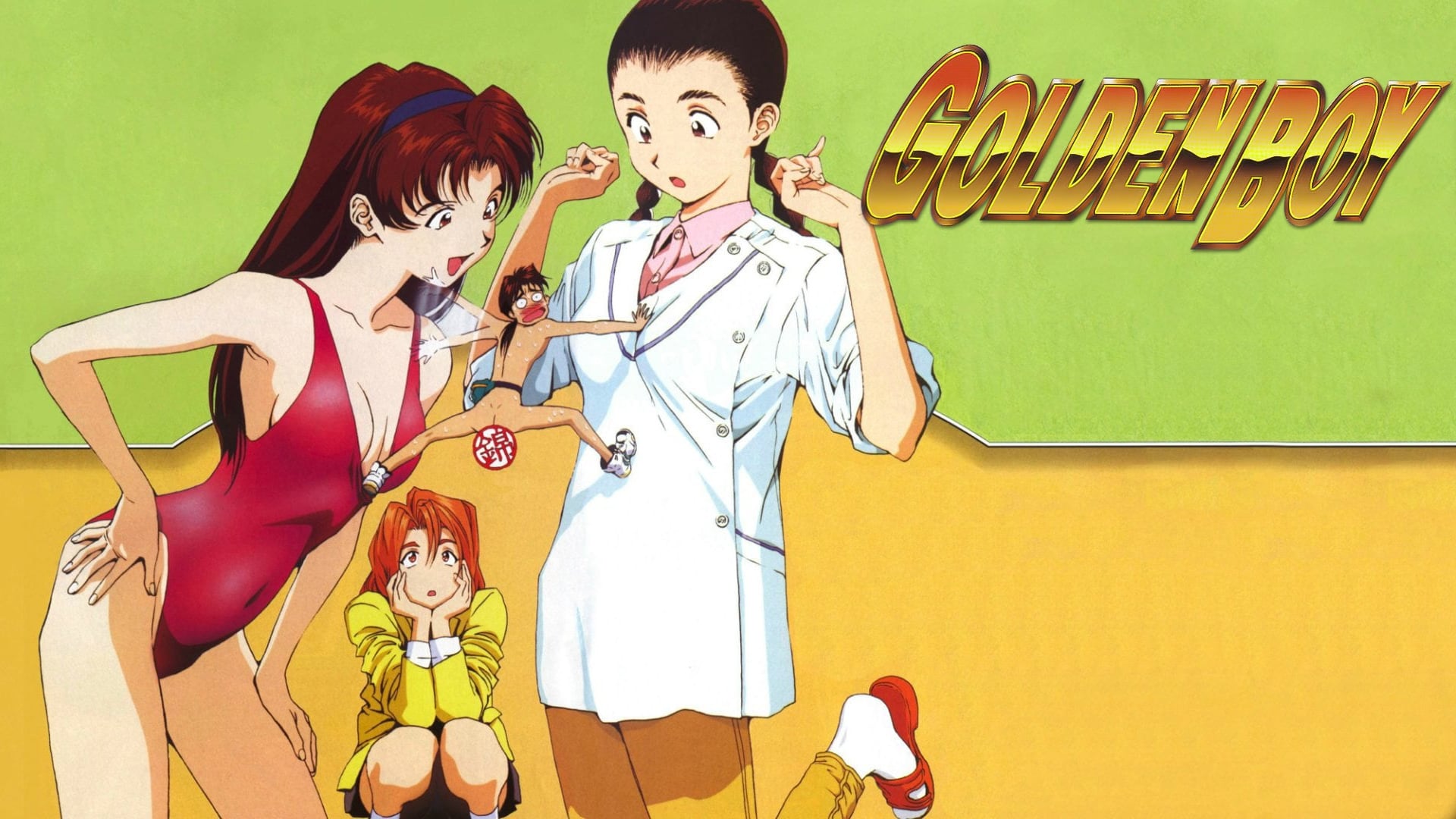
In the realm of classic anime comedy, Golden Boy reigns supreme, led by the irrepressible Kintaro Oe, the epitome of a perverted yet charming character.
With nothing but his wits and wanderlust, Kintaro traverses Japan, eagerly seeking to savor the myriad experiences life has to offer, all while pursuing encounters with beautiful women. As he looks on his unconventional journey, Kintaro’s evolution becomes the heart of the series, compelling him to adapt and grow in unexpected ways.
Unapologetically tailored for adult audiences, Golden Boy candidly portrays Kintaro’s lustful inclinations without glossing over the complexities of his character.
Despite his overtly amorous nature, Kintaro emerges as a surprisingly endearing protagonist, driven by genuine curiosity and an unwavering commitment to self-improvement. His earnestness and vulnerability add layers of depth to his character, making him both relatable and memorable.
While unabashedly comedic, Golden Boy strikes a delicate balance, maintaining a level of decency amidst its risqué humor. Kintaro’s antics may push the boundaries of propriety, yet they are infused with a sense of innocence and sincerity that keeps the humor accessible and enjoyable. As a result, the series remains relevant and entertaining, its humor standing the test of time with remarkable finesse.
At its core, Golden Boy celebrates the quirks and eccentricities that define its protagonist. Kintaro’s unabashed pursuit of knowledge and experience resonates with audiences, inspiring laughter and admiration in equal measure.
Whether navigating the complexities of the workplace or looking at misadventures, Kintaro’s journey is as educational as it is entertaining, offering valuable insights into the human experience.
Golden Boy is a comedic gem that continues to fascinate audiences with its unique blend of humor, heart, and irreverence. Through Kintaro’s escapades, the series reminds us to embrace life’s absurdities and to approach every challenge with an open mind and a generous dose of humor.
“Golden Boy” is a six-episode OVA (Original Video Animation) series based on the manga of the same name written by Tatsuya Egawa. Directed by Hiroyuki Kitakubo and produced by APPP (Animation Production Project), “Golden Boy” first aired in 1995. The series is renowned for its comedic hijinks, witty humor, and ecchi elements, as well as its protagonist’s pursuit of self-improvement and personal growth.
“Golden Boy” follows the misadventures of Kintaro Oe, a freeter (unemployed person) with a genius intellect and a thirst for knowledge. Despite his academic brilliance, Kintaro chooses to travel across Japan, taking on various odd jobs and temporary positions to learn from real-world experiences.
Each episode of “Golden Boy” features Kintaro immersing himself in a new environment, whether as a janitor, computer programmer, or even a motorcycle racer. Along the way, he encounters a colorful cast of characters and gets entangled in comedic and often risqué situations. Despite his tendency to be seen as a pervert due to his lustful nature, Kintaro’s genuine kindness, humility, and dedication to self-improvement endear him to those he encounters.
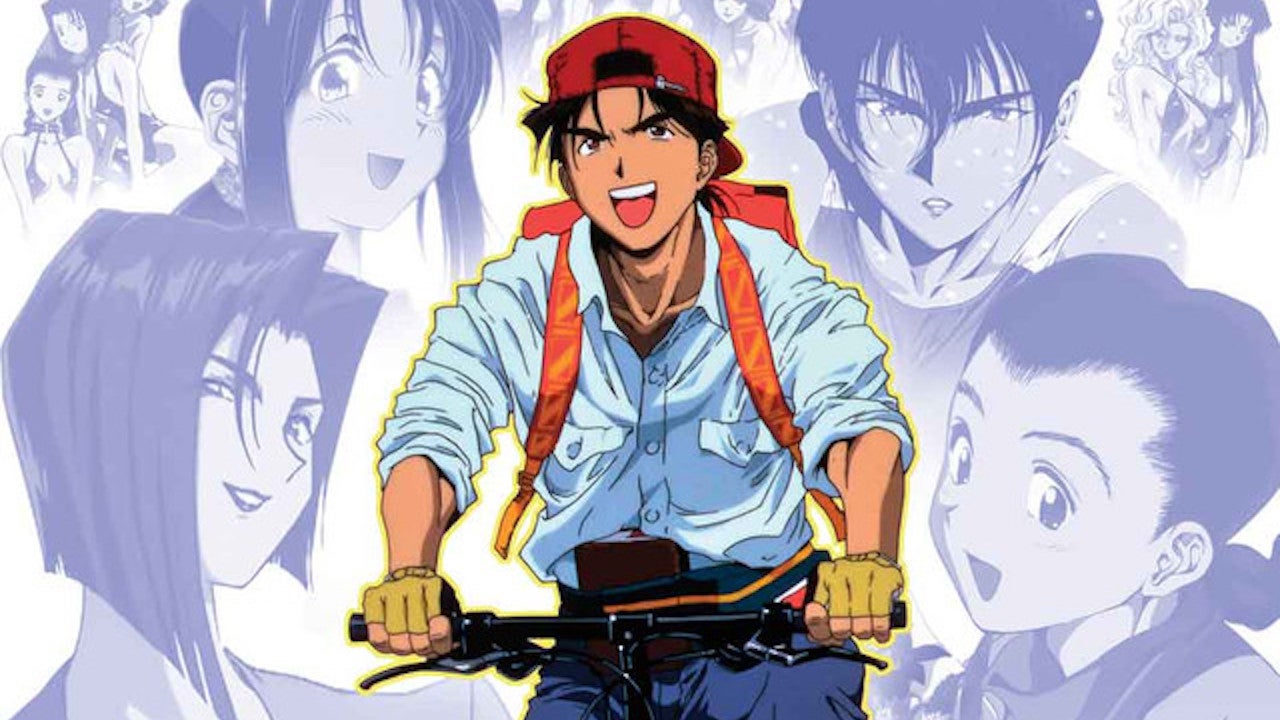
“Golden Boy” explores themes of self-discovery, ambition, and the pursuit of excellence. Kintaro Oe’s journey serves as a metaphor for the importance of embracing life’s challenges and seizing opportunities for personal growth. Despite his unconventional approach to learning, Kintaro’s insatiable curiosity and boundless enthusiasm inspire those around him to strive for greatness.
While Kintaro’s antics often veer into comedic territory, the series also touches on more serious themes, such as workplace dynamics, gender roles, and the value of perseverance. Through his interactions with various women in the series, Kintaro learns valuable lessons about empathy, respect, and understanding.
“Golden Boy” features vibrant and expressive animation that captures the exaggerated expressions and slapstick humor of the source material. The character designs by Tatsuya Egawa are distinctive and memorable, with Kintaro’s iconic red bike and signature yellow backpack becoming emblematic of the series’ adventurous spirit.
One of the defining aspects of “Golden Boy” is its comedic humor and ecchi (erotic) elements. The series juxtaposes Kintaro’s intellectual prowess with his comically exaggerated reactions to situations involving women, often leading to risqué and over-the-top scenarios.
While some viewers may find the ecchi content controversial or off-putting, “Golden Boy” approaches these moments with a playful and lighthearted tone, emphasizing the absurdity of Kintaro’s antics.
“Golden Boy” has achieved cult status among anime fans for its irreverent humor, memorable characters, and iconic catchphrases. While initially released as a six-episode OVA series, “Golden Boy” has since been re-released in various formats and continues to be celebrated for its comedic charm and timeless appeal.
“Golden Boy” is recommended for viewers seeking a hilarious and light-hearted anime experience with a dose of ecchi humor. While the series may not be suitable for all audiences due to its adult themes and content, fans of comedy and slice-of-life anime will find “Golden Boy” to be a refreshing and entertaining romp through the misadventures of its endearing protagonist, Kintaro Oe.
4. Carnival Phantasm
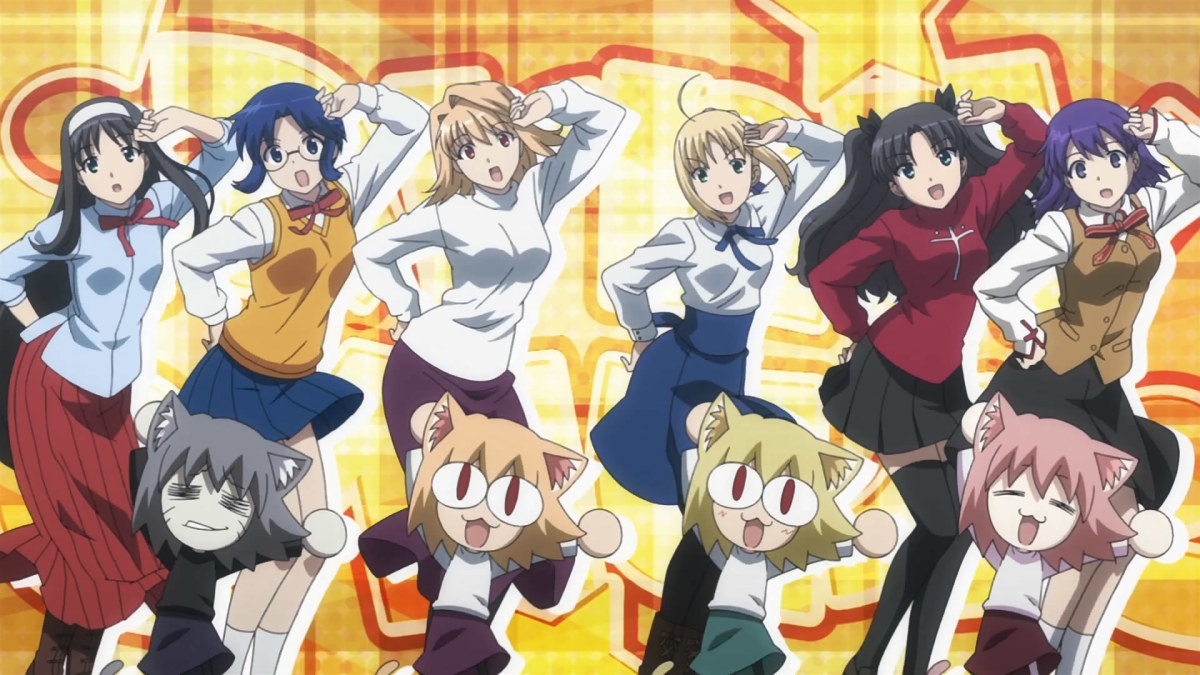
Carnival Phantasm occupies a unique niche in the anime realm, making it a somewhat tricky recommendation for those unfamiliar with Type-Moon’s vast universe. This comedic OVA series serves as a playful parody of beloved properties like Fate/Stay Night and Tsukihime, relying heavily on viewers’ familiarity with these iconic characters and settings to fully appreciate its humor.
For devoted fans well-versed in the Type-Moon lore, Carnival Phantasm is a delightful romp filled with clever wordplay and uproarious slapstick comedy. Each episode, clocking in at a breezy 14 minutes, offers a brief yet satisfying glimpse into a whimsical world where familiar faces find themselves in absurd situations.
It’s a joyful celebration of the source material, delivering laughs aplenty while maintaining the integrity of the characters’ personalities.
However, for newcomers to the Type-Moon universe, Carnival Phantasm may lack the context necessary to fully appreciate its humor. At the same time, the series does offer some standalone comedic moments that newcomers may enjoy, its true charm lies in its affectionate lampooning of established characters and storylines.
That said, Carnival Phantasm remains a delightful watch for fans of Type-Moon, serving as a love letter to the beloved franchises that have captured the hearts of many. Its succinct runtime ensures that it never overstays its welcome, leaving viewers with a sense of joy and nostalgia after each episode.
Carnival Phantasm is a must-watch for aficionados of Type-Moon’s works, offering a lighthearted and comedic take on beloved characters and settings. While newcomers may still find enjoyment in its humor, the series truly shines when experienced through the lens of fandom, making it a cherished gem for those immersed in the world of Fate/Stay Night and Tsukihime.

“Carnival Phantasm” is a delightful anime series that serves as a comedic parody of Type-Moon’s popular visual novel and anime franchises, particularly “Fate/Stay Night” and “Tsukihime.” Created by studio Lerche and directed by Seiji Kishi, “Carnival Phantasm” first aired in 2011 as a celebration of Type-Moon’s 10th anniversary. It consists of 12 episodes, each approximately 14 minutes long.
The premise of “Carnival Phantasm” revolves around the characters from various Type-Moon properties finding themselves in hilarious and absurd situations, often breaking the fourth wall and poking fun at the tropes and conventions of the original series. The show blends elements of comedy, parody, and slice-of-life, offering a fresh and entertaining take on familiar characters.
One of the highlights of “Carnival Phantasm” is its diverse cast of characters, drawn from different Type-Moon works. Fans of “Fate/Stay Night” will recognize iconic characters like Saber, Shirou Emiya, and Rin Tohsaka, while followers of “Tsukihime” will encounter figures like Shiki Tohno and Arcueid Brunestud. Additionally, characters from other Type-Moon properties, such as “Melty Blood” and “Kagetsu Tohya,” make appearances, adding to the series’ charm and appeal.
The humor in “Carnival Phantasm” is multi-faceted, ranging from slapstick comedy to clever wordplay and meta-references. The show expertly satirizes the character archetypes and plot conventions of the original series while simultaneously paying homage to them. Fans will appreciate the numerous inside jokes and references sprinkled throughout each episode, rewarding viewers with a deep understanding of Type-Moon lore.
Visually, “Carnival Phantasm” is vibrant and colorful, with fluid animation and expressive character designs. The animation style seamlessly transitions between comedic and action-packed sequences, capturing the essence of each character’s personality and quirks. The character designs remain faithful to their respective source material while incorporating slight exaggerations for comedic effect.
The soundtrack of “Carnival Phantasm” complements the lighthearted tone of the series, featuring catchy opening and ending themes that set the mood for each episode. The voice acting is top-notch, with seasoned voice actors delivering stellar performances that enhance the comedic timing and delivery of the dialogue.
While “Carnival Phantasm” primarily caters to fans of Type-Moon’s works, its humor and charm make it accessible to a broader audience. Even viewers who are not familiar with the source material can still enjoy the comedic antics and absurd situations presented in each episode. However, longtime fans will undoubtedly derive the most enjoyment from the series, as it rewards their investment in the Type-Moon universe with countless references and Easter eggs.
Carnival Phantasm is a must-watch for fans of Type-Moon’s visual novels and anime adaptations. With its clever humor, lovable characters, and expertly crafted parodies, it stands as a shining example of how to celebrate a beloved franchise while simultaneously poking fun at its tropes and conventions.
Whether you’re a seasoned Type-Moon enthusiast or a newcomer looking for a good laugh, “Carnival Phantasm” offers something for everyone.
3. Terror in Resonance
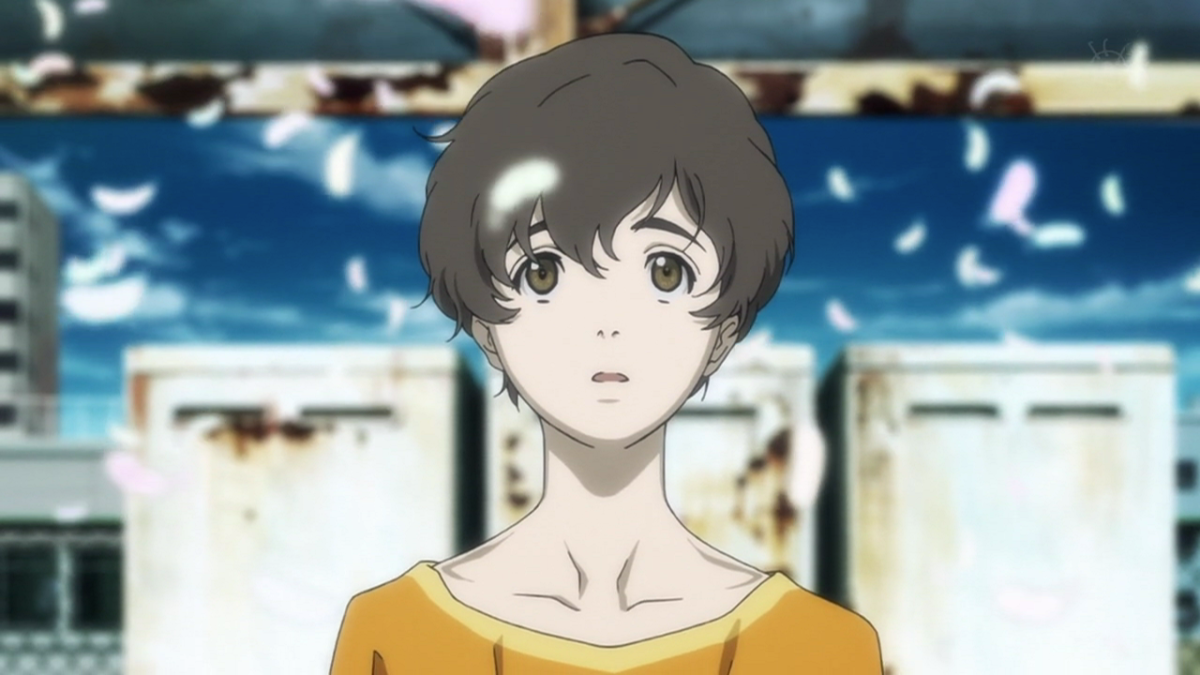
Terror in Resonance marks a departure from Shinichiro Watanabe’s signature works like Cowboy Bebop and Samurai Champloo, yet it stands as a testament to his directorial prowess in a more compact format. With its concise runtime, the anime wastes no time in delivering a gripping narrative that unfolds with relentless momentum.
Centered around the exploits of two enigmatic teenagers named Nine and Twelve, Terror in Resonance dives into the heart of moral ambiguity. Their orchestrated terrorist attacks on Tokyo are meticulously designed to provoke social upheaval while minimizing casualties, blurring the lines between right and wrong. As they challenge the authorities with cryptic riddles and escalating threats, the series confronts viewers with a complex ethical dilemma.
Despite their sympathetic motives, Nine and Twelve’s actions are not without consequence, forcing audiences to grapple with the implications of their choices. Watanabe masterfully navigates this morally gray territory, crafting a narrative that challenges preconceptions and defies easy categorization.
From its explosive opening episodes to its riveting ending, Terror in Resonance maintains a tight grip on viewers’ attention. Every moment is filled with tension and intrigue, propelled by a sense of urgency that permeates the entire series.
While Terror in Resonance may be shorter in length compared to Watanabe’s other works, its impact is no less profound. Through its thought-provoking narrative and morally complex characters, the anime leaves a lasting impression, inviting viewers to ponder the nature of justice and the consequences of extremism.
Terror in Resonance stands as a testament to Shinichiro Watanabe’s directorial skill, offering a compact yet compelling exploration of morality and identity. With its fast-paced storytelling and nuanced character dynamics, the series fascinates from start to finish, leaving audiences both enthralled and introspective.
“Terror in Resonance,” also known as “Zankyou no Terror,” is a thought-provoking anime series that blends elements of psychological thriller, mystery, and social commentary. Directed by Shinichirō Watanabe and produced by MAPPA, the series aired in 2014 and consists of 11 episodes.
The story of “Terror in Resonance” is set in an alternate version of present-day Tokyo, where the city is rocked by a series of mysterious terrorist attacks. These attacks are orchestrated by two enigmatic teenagers known only as Nine and Twelve, who possess exceptional intellect and skill.

Using elaborate plans and sophisticated technology, they carry out bombings across the city, leaving cryptic clues behind. As the authorities struggle to apprehend them, a game of cat and mouse ensues between the terrorists and the police.
Central to the narrative is the character of Lisa Mishima, a timid high school student who becomes inadvertently entangled in Nine and Twelve’s schemes. Through her perspective, the audience gains insight into the motivations and complexities of the terrorists, as well as the moral ambiguity surrounding their actions.
As the series progresses, themes of identity, justice, and the consequences of trauma come to the forefront, challenging both the characters and the audience to confront difficult ethical questions.
One of the strengths of “Terror in Resonance” lies in its well-developed characters and their nuanced relationships. Nine and Twelve, despite being antagonists, are portrayed with depth and humanity, eliciting sympathy and understanding from the audience.
Their backstory, revealed gradually throughout the series, sheds light on their motivations and the traumas that shaped their actions. Similarly, Lisa’s character undergoes significant growth as she grapples with her own sense of identity and agency in the face of extraordinary circumstances.
Visually, “Terror in Resonance” is stunning, with fluid animation, striking cinematography, and atmospheric direction. The use of light and shadow, as well as the juxtaposition of urban surfaces with moments of quiet introspection, contributes to the series’ haunting and evocative atmosphere.
The soundtrack, composed by Yoko Kanno, further enhances the mood with its haunting melodies and atmospheric tracks, effectively complementing the emotional depth of the story.
Thematically, “Terror in Resonance” explores timely and relevant issues, such as the consequences of social alienation, the ethics of political violence, and the impact of trauma on individuals and society.
Through its intricate plot and complex characters, the series invites viewers to consider the underlying causes of terrorism and the complexities of justice in an increasingly interconnected world.
Terror in Resonance” is a gripping and thought-provoking anime that delivers a compelling narrative, complex characters, and stunning visuals.
With its exploration of timely themes and ethical dilemmas, it offers more than just thrills and suspense—it challenges viewers to engage with difficult questions about morality, identity, and the nature of power. Whether you’re a fan of psychological thrillers or simply enjoy thought-provoking storytelling, “Terror in Resonance” is a must-watch anime that leaves a lasting impression.
2. Cyberpunk Edgerunners
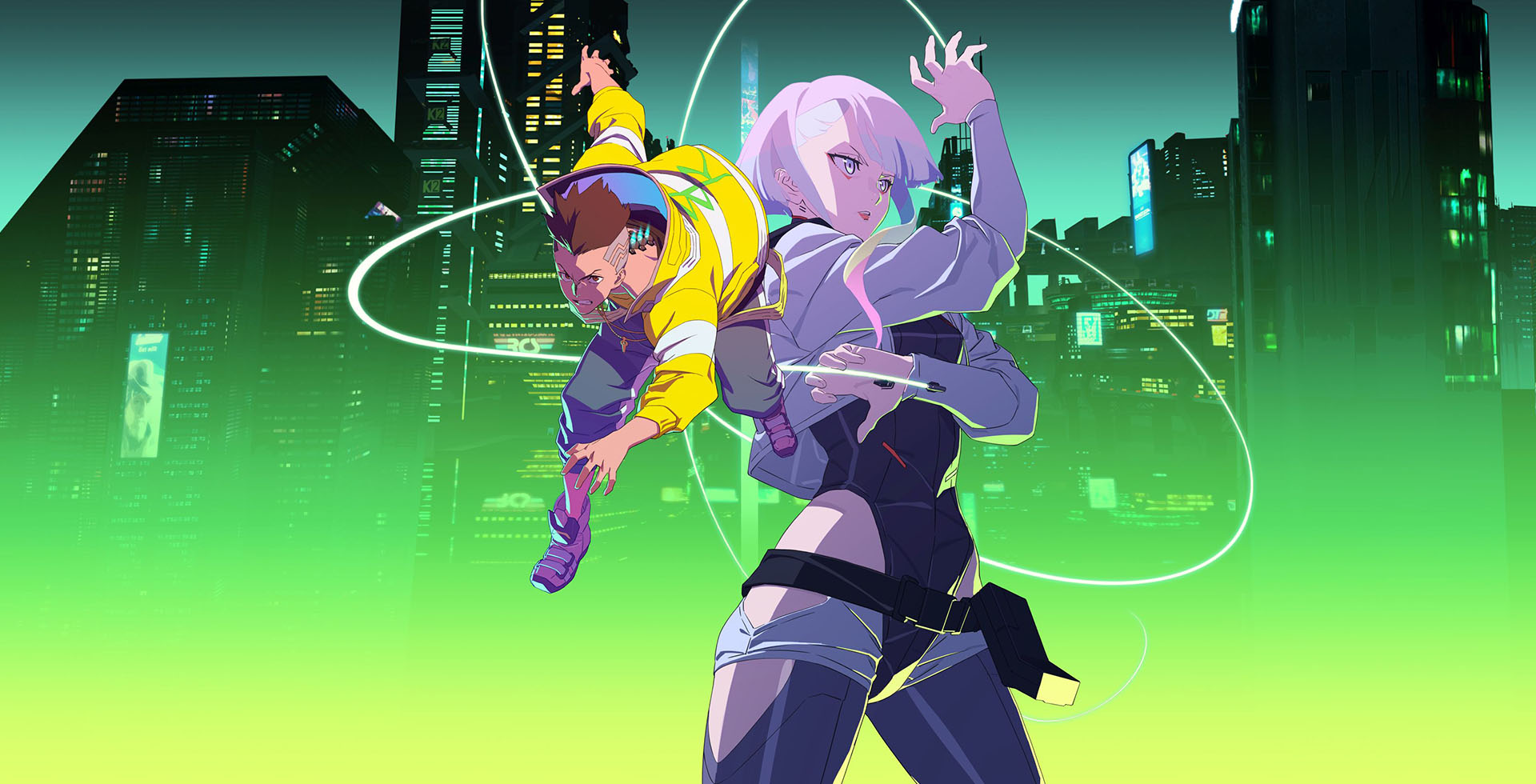
Set against the backdrop of the iconic Night City, Studio Trigger’s Edgerunners offers a visually stunning yet emotionally devastating journey through the dark underbelly of cyberpunk dystopia. Preceding the events of Cyberpunk 2077, the series immerses viewers in a world teetering on the brink of chaos, where violence, hopelessness, and consequences intertwine to form a harrowing narrative.
At the heart of Edgerunners lies Night City itself, a sprawling metropolis that dazzles with its neon lights and cutting-edge technology while concealing a corrupt and destructive core. Here, survival is a constant struggle, and the line between legality and criminality blurs as the disenfranchised are pushed to the fringes of society.
Amidst this bleak place, protagonist David finds himself ensnared in a web of debt and desperation, ultimately finding solace in the ranks of a mercenary group of Netrunners. His journey intertwines with that of Lucy, a woman whose presence offers a glimmer of humanity in a world consumed by darkness.
Edgerunners seamlessly integrates references to Cyberpunk 2077 while carving out its own distinct identity. The animation, a hallmark of Studio Trigger’s expertise, elevates Night City to new heights of visual splendor, surpassing even the acclaimed video game adaptation.
Despite its breakneck pace, the series never falters in its ability to fascinate audiences, ensuring that each episode is filled with pulse-pounding action and thought-provoking drama. While the narrative may verge on the frenetic at times, it serves to underscore the urgency and intensity of life in Night City.
Edgerunners stands as a testament to Studio Trigger’s mastery of the cyberpunk genre, offering a compelling blend of breathtaking visuals and poignant storytelling. As viewers are drawn deeper into the murky depths of Night City, they are confronted with themes of survival, identity, and the price of redemption in a world on the brink of collapse.
“Cyberpunk: Edgerunners” is a highly anticipated anime series set in the universe of the popular tabletop role-playing game Cyberpunk 2020, created by Mike Pondsmith.
Produced by CD Projekt Red, the studio behind the critically acclaimed video game adaptation “Cyberpunk 2077,” and animated by Studio Trigger, known for their visually stunning work on “Kill la Kill” and “Promare,” this collaboration promises to deliver a gripping narrative set in the dystopian future of Night City.
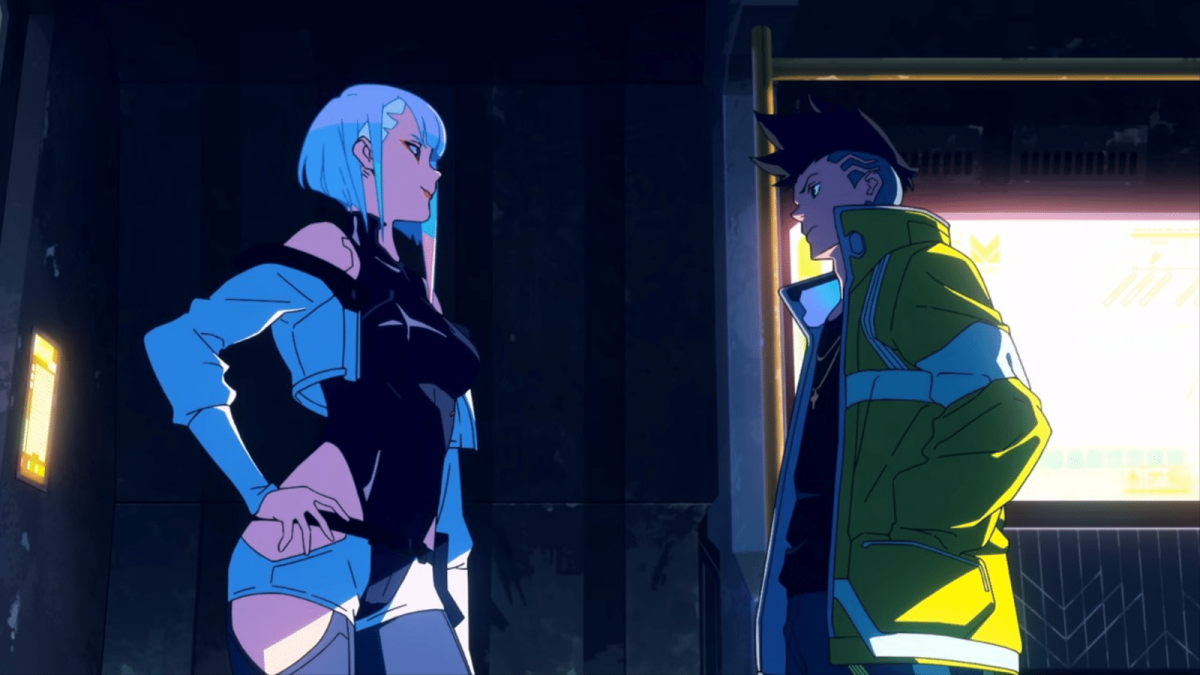
The series is set in the same universe as the video game and tabletop RPG, focusing on the lives of “Edgerunners” – individuals who operate on the fringes of society, taking on dangerous jobs for profit, survival, or personal gain.
Drawing inspiration from classic cyberpunk themes such as corporate greed, urban decay, and advanced technology, “Cyberpunk: Edgerunners” explores the dark underbelly of a society where megacorporations hold immense power, while the lower classes struggle to survive in the shadows.
One of the most exciting aspects of “Cyberpunk: Edgerunners” is its creative team. Studio Trigger’s distinct animation style, characterized by bold colors, fluid motion, and dynamic action sequences, is perfectly suited for bringing the gritty, high-tech world of Cyberpunk to life.
Meanwhile, CD Projekt Red’s expertise in world-building and storytelling ensures that the series will stay true to the spirit of the Cyberpunk universe, offering a compelling narrative that explores complex themes and characters.
The series is expected to feature an ensemble cast of diverse characters, each with their own motivations, backstories, and conflicts. From streetwise hackers and cybernetically enhanced mercenaries to ruthless corporate executives and idealistic rebels, “Cyberpunk: Edgerunners” promises to showcase a wide range of personalities and perspectives, adding depth and richness to its futuristic world.
In addition to its compelling characters and narrative, “Cyberpunk: Edgerunners” is likely to feature breathtaking visuals and action-packed sequences that will excite audiences.
Studio Trigger’s talent for combining traditional animation techniques with cutting-edge CGI technology ensures that the series will be visually stunning, with detailed character designs, intricate cityscapes, and intense action scenes that will keep viewers on the edge of their seats.
Cyberpunk: Edgerunners has the potential to be a groundbreaking addition to the cyberpunk genre, offering a fresh perspective on familiar themes while staying true to the spirit of the source material. With its talented creative team, compelling characters, and stunning visuals, the series is sure to be a must-watch for fans of cyberpunk fiction and anime alike.
1. Ping Pong the Animation
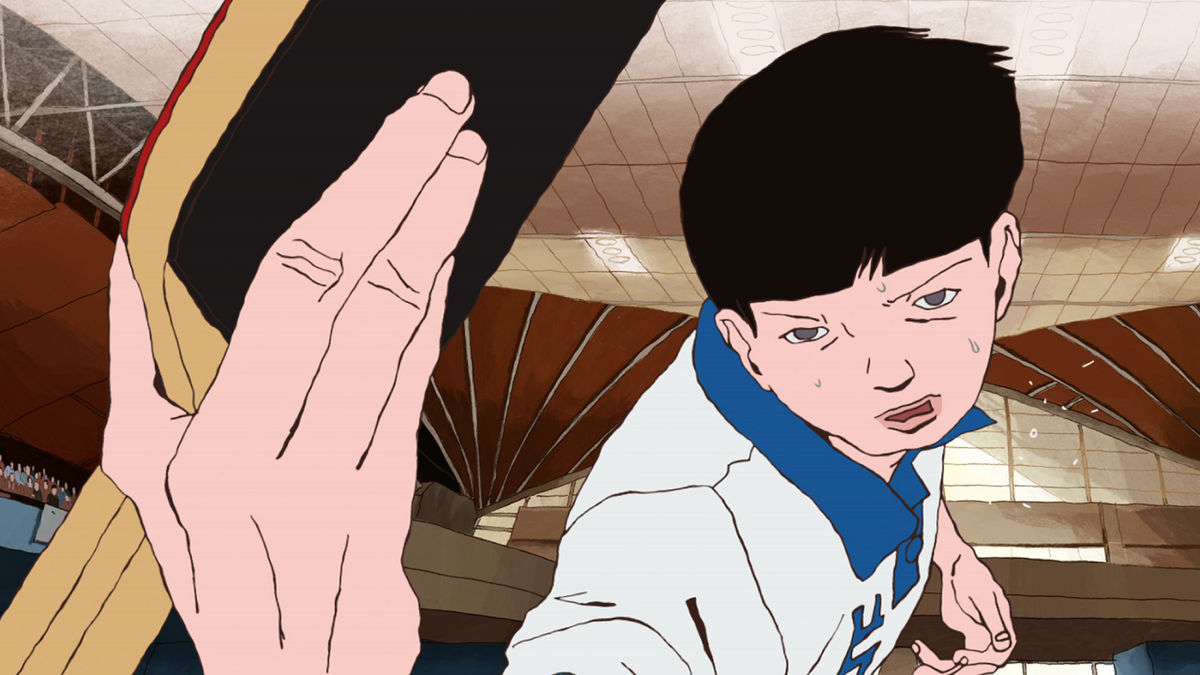
In the vast place of sports anime, Ping Pong the Animation stands as a singular masterpiece that transcends the genre’s conventions. Helmed by the visionary director Masaaki Yuasa, the series has garnered near-universal acclaim for its fascinating storytelling and stunning visuals, earning its place among anime’s most revered works.
Unlike traditional sports anime, Ping Pong the Animation forges its own path, existing in a realm with few comparisons beyond Yuasa’s own directorial repertoire. While ping pong serves as the backdrop, the heart of the story lies in the profound friendship between Smile and Peco, two boys whose contrasting personalities are bound by a deep bond.
As Smile idolizes Peco’s passion and skill on the ping pong table, their friendship undergoes a transformative journey when Peco begins to lose his drive. It falls upon Smile to reignite the spark within his friend, leading to a poignant exploration of ambition, friendship, and the pursuit of greatness.
What sets Ping Pong Animation apart is its exquisite blend of gorgeous visuals, masterful writing, and deeply relatable characters. Each frame is infused with Yuasa’s distinct artistic style, immersing viewers in a vibrant world where emotion and movement converge seamlessly.
At its core, the series resonates with authenticity, capturing the highs and lows of competitive sports and the complexities of human relationships with nuance and depth. Through Smile and Peco’s evolving dynamic, Ping Pong the Animation looks into themes of self-discovery, perseverance, and the transformative power of friendship.
Ping Pong Animation is a testament to the boundless creativity and storytelling prowess of Masaaki Yuasa. Its status as a masterpiece is well-deserved, offering a poignant and visually stunning exploration of friendship, ambition, and the pursuit of excellence. For fans of anime and sports alike, this series is an absolute must-watch.
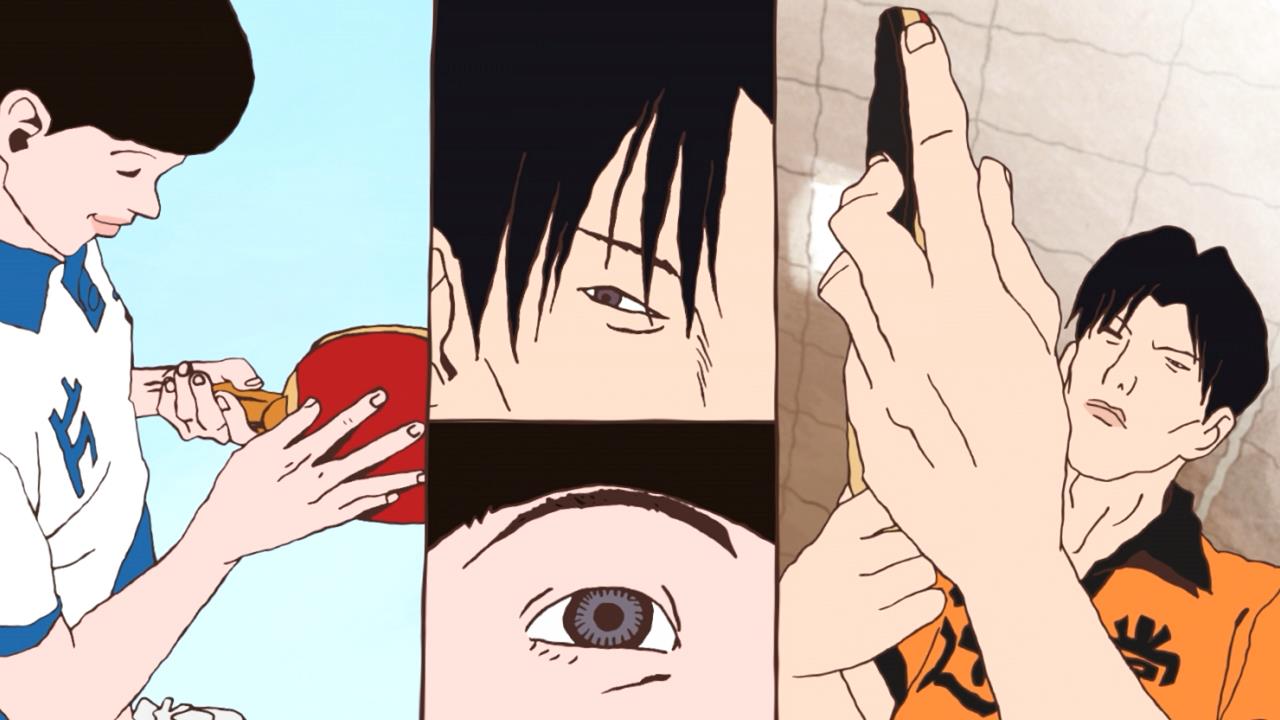
“Ping Pong the Animation” is a visually stunning and emotionally resonant anime series based on the manga by Taiyō Matsumoto. Directed by Masaaki Yuasa and produced by Tatsunoko Production and Studio M2, the series first aired in 2014. Renowned for its unique art style, dynamic animation, and deep exploration of friendship, ambition, and personal growth, “Ping Pong the Animation” has earned widespread acclaim from critics and audiences alike.
“Ping Pong the Animation” revolves around the lives of competitive table tennis players from the Kaio Academy and Katase High School teams. The series primarily focuses on the friendship and rivalry between two talented players: Smile (Makoto Tsukimoto) and Peco (Yutaka Hoshino).
Despite their vastly different personalities and approaches to the sport, Smile, a reserved and introverted prodigy, and Peco, an outgoing and charismatic player, share a deep bond forged through their shared passion for table tennis. As they navigate the challenges of competitive play, they encounter a diverse cast of characters, including their teammates, coaches, and opponents, each with their own motivations and aspirations.
As Smile and Peco strive to reach the pinnacle of their sport, they confront personal obstacles, doubts, and setbacks that test their resolve and shape their journey toward self-discovery and fulfillment.
“Ping Pong the Animation” explores themes of identity, ambition, and the pursuit of excellence. The series goes into the complex psychology of competitive athletes, examining the sacrifices and struggles they endure in their quest for success.
Through its nuanced portrayal of the character’s inner conflicts and growth, “Ping Pong the Animation” highlights the transformative power of sports and the importance of resilience, perseverance, and camaraderie.
Each character in “Ping Pong the Animation” undergoes significant development throughout the series, grappling with their own insecurities, fears, and desires. From the stoic Smile to the flamboyant Peco, and from the disciplined Dragon to the enigmatic Kong, every character brings depth and complexity to the narrative, contributing to its emotional depth and thematic richness.
One of the most striking aspects of “Ping Pong the Animation” is its innovative art style and dynamic animation. Masaaki Yuasa’s direction imbues the series with a sense of energy and vitality, with fluid motion and expressive character designs that capture the intensity of table tennis matches.
The series’ art style eschews traditional anime aesthetics in favor of a more stylized and experimental approach, incorporating bold colors, abstract imagery, and unconventional framing techniques. This distinctive visual style enhances the emotional impact of the narrative, immersing viewers in the world of competitive sports and the inner lives of its characters.
The soundtrack of “Ping Pong the Animation,” composed by Kensuke Ushio, complements the series’ emotional depth and kinetic energy. The use of electronic beats, jazz-infused melodies, and atmospheric soundscapes enhances the mood and atmosphere of each scene, evoking a sense of tension, excitement, and introspection.
“Ping Pong the Animation” has received universal acclaim from critics and audiences for its innovative storytelling, breathtaking animation, and poignant themes. The series has been praised for its realistic portrayal of sports, nuanced characterization, and profound exploration of human emotions. “Ping Pong the Animation” is recommended for viewers seeking a thought-provoking and visually arresting anime experience.
Whether you’re a fan of sports anime or simply appreciate compelling storytelling and stunning animation, “Ping Pong the Animation” offers a journey into the hearts and minds of its unforgettable characters. With its emotional depth, breathtaking visuals, and timeless themes, “Ping Pong the Animation” stands as a testament to the power of animation as a medium for storytelling and artistic expression.
Memes of the Day
Boku no Kanojo ga Majime Sugiru Shojo Bitch na Ken

Unohana – AfterWork Pixiv
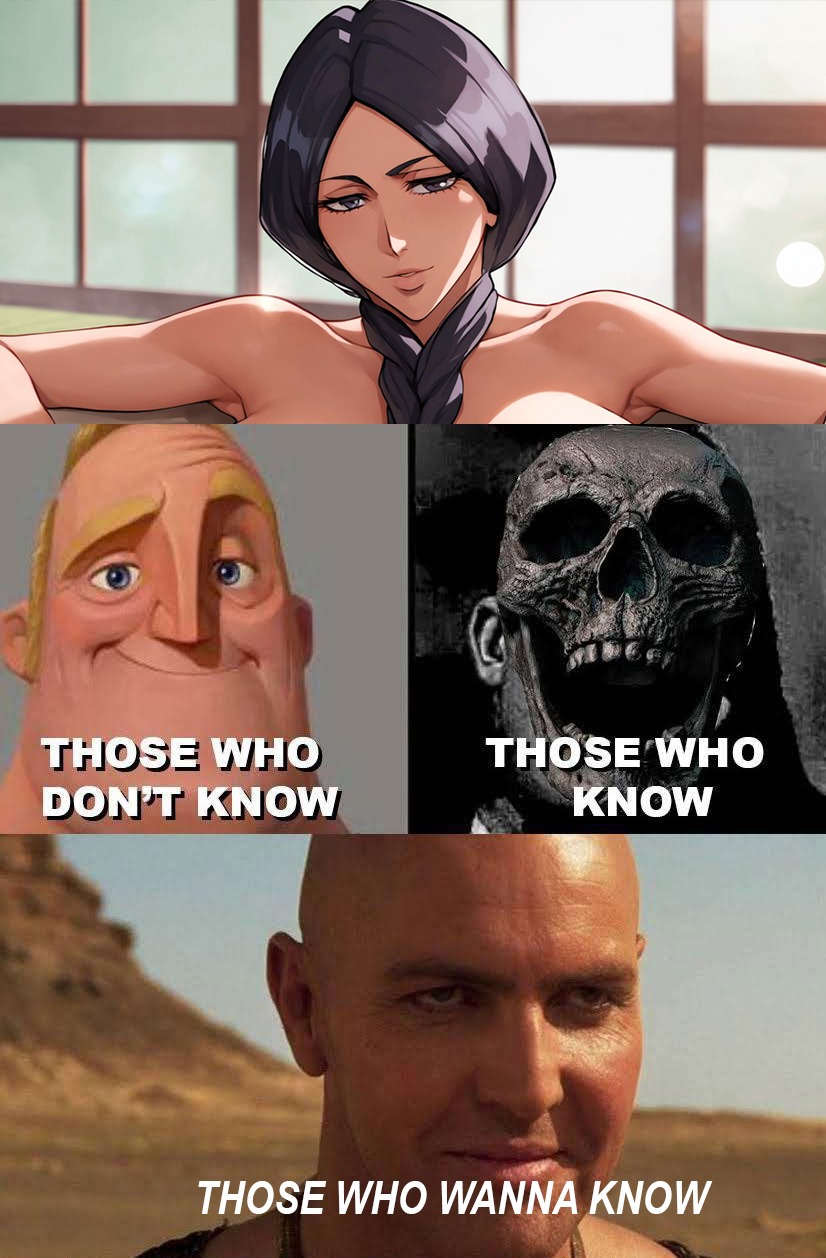
Asobi Asobase

Pixiv 31723495

Rara8 Muchimuchi Oyako to Hame Houdai!

Yamitsuki Pheromone
